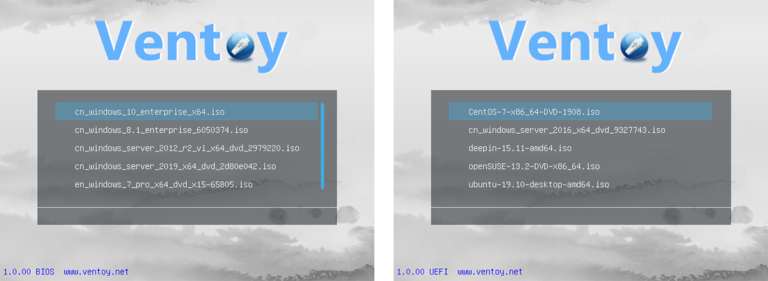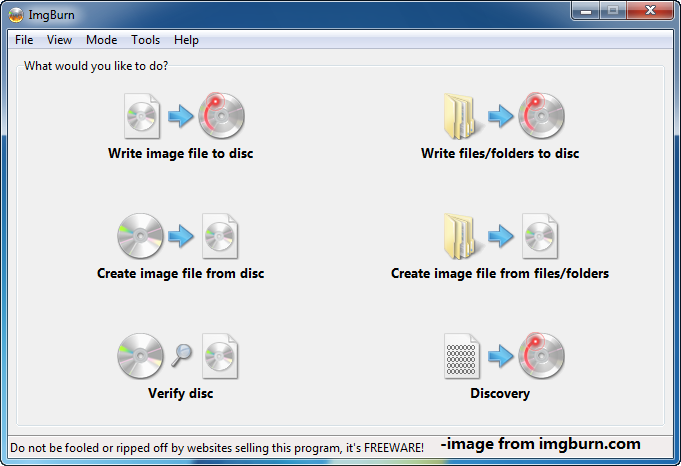

- #Free bootable iso creator how to#
- #Free bootable iso creator install#
- #Free bootable iso creator update#
- #Free bootable iso creator portable#
- #Free bootable iso creator verification#
You cannot even create extended labels or check for bad blocks. For instance, you cannot change the file system or partition scheme. After the initial format, the Windows USB/DVD tool will create the bootable USB drive within a few minutes.Īs easy and good the tool sounds, it lacks any advanced customizations whatsoever. All you have to do is insert the USB drive, select the ISO, and click Next, that’s it. What makes the tool special is its ease of use. As the name suggests, the Windows USB/DVD tool can be used to create both bootable USB and DVD drives. If you are a Windows user and the only requirement is to create a bootable USB drive for Windows, then the official tool is for you.
#Free bootable iso creator portable#
The best thing is Rufus doesn’t require an install, you can run it directly from the portable exe file.įeatures: Free and open-source, Multiple OS & BIOS Support, customizable bootloader options, Bad-block detection, portable variant, etc. If you are looking for a free and fast bootable USB creator then give Rufus a try.
#Free bootable iso creator verification#
Do mind that depending on the drive size, number of passes, and USB drive speed, it takes quite a bit of time to complete the verification process. For that, all you have to do is, select the checkbox “check device for bad blocks” under format options and you are good to go. Rufus also checks the USB drive for any bad blocks. These options are beneficial when you are creating BIOS, firmware, or other low-level drives. Moreover, you get various different options like the ability to change the partition scheme, cluster size, and file system. Add to that, Rufus is much faster than the other apps when it comes to creating bootable Windows USB drives. Rufus not only lets you create bootable USB for different kinds of operating systems but you can also use it to flash BIOS, firmware, and run low-level utilities. When it comes to creating bootable USB drives in Windows, Rufus is the best, free, open-source, and easy-to-use software.
#Free bootable iso creator how to#
Read: How to Use USB Flash Drive on Android and iOS USB Bootable Software 1. To help you create bootable USB drives, here are TechWiser’s top 7 free USB bootable software for Windows. When you no longer need the OS file, you can simply format the drive and use it to store other data. After that, just follow the onscreen instruction and you are good to go. Once done, restart your computer and change the boot order to boot from USB.
#Free bootable iso creator install#
To install an OS, all you need to do is burn the ISO to a USB pen drive using any of the following USB bootable software. Next Next post: Upgrading Cisco Emergency Responder 8.6 to 10.Read: How to Encrypt USB Drive Using VeraCrypt How to create a Bootable USB from iso? Once completed you should have a fully bootable ISO!Īuthor Bryan Posted on JCategories cisco, collaboration, cucm In file explorer, browse to your extracted ISO folder and copy over all the files and folders into the cdrfte window.Ĭlick Start to create your ISO. Under the Boot image field, browse to the copied isolinux directory of your extracted ISO folder and select isolinux.bin. Check the following options: Create boot disc, No disc emulation, and Create boot info table.

Under ISO image, select Use image, and browse to a location to store the finished ISO.
#Free bootable iso creator update#
Next, take your non-bootable update dvd from Cisco and extract the contents with 7zip by right clicking the ISO -> 7-Zip -> Extract to….Ĭopy the isolinux directory you extracted earlier to the newly extracted Cisco ISO folder, overwriting any duplicate files.

Inspired by those bloggers, I wanted to share a method to create bootable media that features the best of both worlds: open source utilities with easy to use interfaces, all for the low low price of free.įirst, find an existing bootable CUCM ISO (a Red Hat or CentOS live cd will do the trick as well) and open it in 7zip.įind the isolinux directory, highlight it, and click Extract. There’s plenty of great posts out there on how to make bootable CUCM/Collaboration media with paid GUI software such as UltraISO or free command line utilities like cdrtools.


 0 kommentar(er)
0 kommentar(er)
